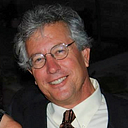SAQs for APUSH Topic 8.12 —Youth Culture of the 1960s
3 min readMar 29, 2021
Ten questions designed to help students review for the annual exam and that relate to the values, practices, traditions, and beliefs of the young people living at the time of the most tumultuous and divisive decade in world history, one marked by the civil rights movement, the Vietnam War and antiwar protests, political assassinations, the first man on the moon, and an emerging “generation gap.
- Mass culture became increasingly homogeneous in the postwar years. What is meant by the term “homogenous mass culture?”
- As mass culture became increasingly homogeneous in the postwar years, artists, intellectuals, and rebellious youth brought forward a number of inspiring challenges to conformity. Name and briefly describe the work of one artist who brought forward a number of inspiring challenges to conformity in the 1960s.
- Name and briefly describe the work of one intellectual who brought forward a number of inspiring challenges to conformity in the 1960s.
- What term is commonly used today to describe the rebellious youth who brought forward a number of inspiring challenges to conformity in the 1960s?
- What was the popular “rebellious youth” counterculture-era phrase popularized in 1966 by Timothy Leary, the American psychologist and writer known for his strong advocacy of psychedelic drugs?
- Rebellious youth who participated in the counterculture of the 1960s rejected many of the social values of their parent’s generation. Name one social value of their parent’s generation that the rebellious youth of the 1960s rejected.
- Rebellious youth who participated in the counterculture of the 1960s rejected many of the political values of their parent’s generation. Name one political value of their parent’s generation that the rebellious youth of the 1960s rejected
- Rebellious youth who participated in the counterculture of the 1960s rejected many of the economic values of their parent’s generation. Name one economic value of their parent’s generation that the rebellious youth of the 1960s rejected
- Rebellious youth of the 1960s advocated for changes in sexual norms. Explain what this means.
- Rebellious youth of the 1960s would play an important role in the Women’s Rights (aka Second Wave Feminsim) Movement of the 1960s and 1970s. What was one goal of the rebellious youth of the 1960s who would participate in the Women’s Rights (aka Second Wave Feminsim) Movement
- Rebellious youth of the 1960s often participated in sizable and passionate anti-Vietnam War protests, some of which led to violence. Name and briefly describe one specific piece of historical evidence in support of the claim that sometimes these “rebellious youth” antiwar protests led to violence.
- Rebellious youth of the 1960s often participated in a well-attended “music festival (aka rock concerts.) Name and briefly describe one rock concert of the 1960s
- Not all youth in the 1960s were “rebellious.” Evidence in support of this claim is something called Young Americans for Freedom. What did the members of this organization believe in and/or value?
- Briefly describe one major similarity and one major difference between the Sharon Statement and the Port Huron Statement.
- Historians, when describing the “youth culture of the 1960s” often mention something called “the generation gap.” What is that?
